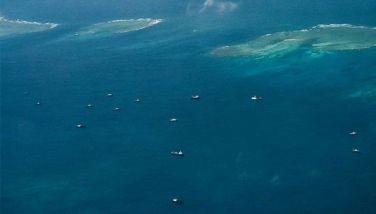RP WWII currency a collector’s item
February 13, 2005 | 12:00am
 WASHINGTON — If you’re one of those folks who hang on to things for sentimental value, the next time you peek into your ‘baul’ treasure chest, see if you have any currency notes that circulated during the Japanese occupation of the Philippines — they may be worth more than the paper they’re printed on.
WASHINGTON — If you’re one of those folks who hang on to things for sentimental value, the next time you peek into your ‘baul’ treasure chest, see if you have any currency notes that circulated during the Japanese occupation of the Philippines — they may be worth more than the paper they’re printed on.
US numismatics expert Peter Rexford said nowadays those occupation bills normally trade for a dollar or two apiece.
In his "Stamp and Coin Exchange" column published in last Friday’s issue of The Washington Times, Rexford was asked if paper money issued in the Philippines during World War II was a collectible item.
He replied: "Absolutely."
"Philippine currency is some of the most attractive that is produced in the South Pacific. For decades, it emulated US currency — even including the portrait of George Washington.
"That changed during the Japanese occupation of 1941-1945, when the Japanese modified it to more reflect the currency in Japan. They did, however, keep the denominations. Those occupation bills normally trade for a dollar or two apiece.
"During the occupation, Philippine rebels hid and fought in the Apayao mountain country. As soldiers, they expected to be paid but had no interest in or use for the Japanese-issued currency.
"Consequently, ‘emergency’ legal tender was printed. It was comparatively crude, and each note was hand-numbered.
"Nice as it must have been to get paid, because rebels had no central bank, the notes technically were IOUs redeemable only after the war.
"Worse, it was ill-advised to carry any. If captured by the Japanese, anyone in possession of the ‘rebel’ currency was executed.
"Clearly," Rexford wrote, "it’s one of the few times in history when it was beneficial not to have money."
BrandSpace Articles
<
>
- Latest
Latest
Latest
December 30, 2024 - 1:30pm
December 30, 2024 - 1:30pm
December 28, 2024 - 4:15pm
By Rupert Paul Manhit | December 28, 2024 - 4:15pm
December 21, 2024 - 4:34pm
By Renato Cruz De Castro | December 21, 2024 - 4:34pm
December 14, 2024 - 5:58pm
By Jing Castañeda | December 14, 2024 - 5:58pm
December 14, 2024 - 11:22am
By Karry Sison | December 14, 2024 - 11:22am
December 9, 2024 - 2:53pm
By Rupert Paul Manhit | December 9, 2024 - 2:53pm
Recommended





























